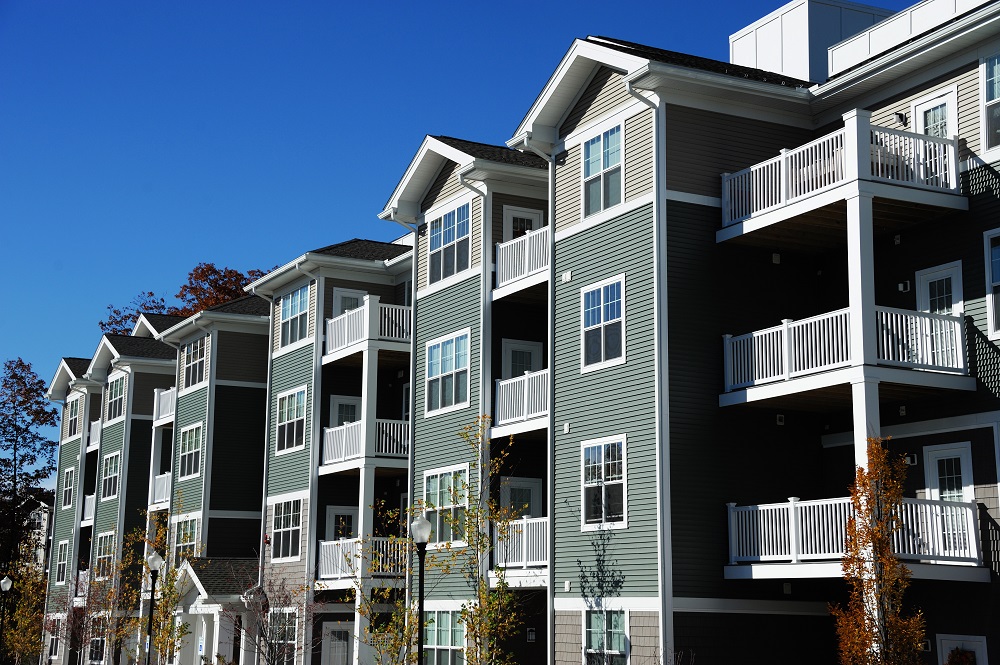Hi everyone, my name is Kevin Boland and I’m a Farmers insurance agent based in our beautiful San Francisco Bay area. As many of you know my specialty is insurance of Homeowner Associations and I am super excited because I have a brand-new educational video for board members and hardworking certified community association managers. I chose this subject because in the last six months we’ve had a spate of interior water claims in condominiums. I realized there is a lot of misunderstanding about when the Association’s insurance comes into play versus the Condominium Owner’s insurance and what happens if the roof leaks or additional units are damaged. I think you’ll find it a very useful video.
Note, you can double click on my video screen and get a larger and clearer view!
3 Types of Insurance
When it comes to property insurance for an Home Owner Associations (HOA) or HO-6/Condominium Associations we always have to look at the CC&Rs insurance section. There you will find a brief description of what type of property policy you have in your Association. When you get there, you will find that there are only three types:
- What’s commonly known as the ‘walls out’ property coverage form
- What’s properly known as the ‘walls in as built’ by the developer property coverage form
- ‘Walls in and everything is insured’ property coverage form
How Each Type Responds to an Interior Water Claim
I want to give you a brief description of all these three different types, because it’s critical that you understand how they respond after an interior water claim. Once you do then you’ll know exactly who’s going to pay.
- With the ‘walls out’ property policy the association’s insurance will only pay for damage sustained outside of the unit or outside of the condominium. A condominium owner has to have enough coverage to pay for all their interior personal property and all their interior building fixtures. By building fixtures I mean the kitchen, the cabinets, the hardwood flooring, the kitchen sinks, the showers, the vanities, the hot water heater, the furnace, the air conditioning system. And don’t forget the wall paint, which is a very expensive type of building fixture, trust me I know as I just got a bid for one and my jaw dropped! In a ‘walls out’ property policy a condominium owner has to insure all their interior building fixtures.
- With ‘walls in as built’ (by the developer) the association’s insurance can pay for new kitchens, new cabinets, new bathrooms, and everything else that I just described. Except only at the same quality as was built by the developer, maybe back in the 60’s or 70’s. When you read the CC&R’s insurance section, you’ll read something like we will pay for all the common area, and the lots, or and the residential structures ‘as built.’ When you when you read those two words, ‘as built’ that means as built by the developer, maybe back in the 60’s or 70’s or whenever. In this situation a Condominium Owner has to have enough coverage in their individual condominium policy to pay for these building upgrades that have occurred inside the home.
- The last type of property policy is called the ‘walls in with everything insured.’ In short, by far the most comprehensive type of property policy today for Associations. This means that the association insurance will pay for all the upgrades, all the building fixtures. A Condominium Owner has to make sure that they have enough building fixture coverage up to that deductible. For example, let’s say you have a $10,000 property deductible. If it’s only a $6,000 interior water claim, the association’s insurance, even though it’s going to pay for everything will not even come into play because the deductible hasn’t been reached yet. If you live in a condominium and you have a ‘walls in with everything’ make sure you have enough building fixture coverage in your HO-6 or Condominium policy to pay up to that property deductible.
That’s a brief description of all three types.

Which Type Should You Buy?
If you live in a Condominium Association you may be asking yourself right now, “well that sounds great Kevin but what type of property policy should we buy for our Association?”
As board members you have the right to choose and there are pros and cons for two types. Say that you’ve had a lot of interior water claims because a toilet overflowed, or a sink was left on, or a hot water heater burst inside a unit. Suddenly, you’ve had three claims in a couple of years. Your insurance premium is going to rise.
I’ve had this happen a couple of times and boards have decided to go with a ‘walls out’ property policy. That way they can let the homeowner pay for small claims, let’s say under $10,000, but if there’s a major catastrophe the Association’s property insurance is still there. By doing so you eliminate those little minor claims, and therefore the insurance rates can come back down to normal again. That’s something that has actually happened several times with my clients. I insure over 40 Associations today so I’ve seen a lot. I’ve had a lot of boards tell me, “Kevin, you know when people buy Condominiums they never read the insurance section of the CC&R’s and they’re busy with a lot going on in their lives especially young couples with kids. We know that they’re not going to be properly insured, so we’re going to make sure that they are, and on top of that when they pay the monthly dues part of those dues are paying insurance premiums.”
Some boards really feel strongly that they should insure with everything covered. All the upgrades covered under the property policy. That’s perfectly legitimate too, so it all depends on the Board and what your unique situation is. I hope that helps.

Interior Water Claims in Condominiums – an Example:
Now let’s look at one interior water claim and how the three different types of property policies would respond. I think after this you may understand how it works. Let’s say you have a four-story Condominium, and on the fourth floor a hot water heater burst, and it floods two units below. It’s a $40,000 claim and there’s a $10,000 property deductible.
Who’s going to pay the interior water claim?
- If it’s a ‘wall’s out’ property policy the Association’s insurance is not going to pay a penny because all the damage was sustained inside the units. Who’s going to pay for the two units below? Well, they have a choice, they can either go directly to the liability portion of the unit owner who caused the problem, or they can file their own insurance claim with their own insurance companies. You better believe theirs and those insurance companies will send a bill to the condominium owner who caused the problem.
- If it’s a ‘walls in as built’ property policy. If the deductible was breached and it was only $10,000, the Association policy can come in and pay for all the new building fixtures, all the hardwood flooring, all the sheetrock, all the paint that was damaged. But only with the same quality of fixtures that were built by the developer back in the 70s. If a Condominium Owner, for example, has a granite countertop, and beautiful hardwood floors the Association’s insurance will not pay for those upgrades. The Condominium Owner must. But what about the two units below that were damaged? They’re okay because they didn’t cause the problem. If their own individual insurance policy doesn’t cover upgrades either, they can go back to the liability portion of the Condominium Owner (who caused the problem) insurance. [By the way, I recommend that liability coverage should be a $1,000,000 – I see too many Condominium Owners with only $300,000 coverage. Enough to pay a water claim, but what if they cause a fire? I always recommend to my clients they have a $1,000,000 in liability coverage.] In this situation the unit owners are covered and the homeowner who caused the problem better have coverage for upgrades because remember with the ‘as built’ by the developer policy no upgrades are covered.
- If it’s ‘walls in with everything insured’ the Association’s insurance can swoop in and pay for everything. They will send a one-time special assessment to the Condominium owner who caused the problem to reimburse the association for that $10,000 property deductible. Most HO-6 or Condominium policies have coverage for what’s called ‘loss assessment. If you don’t have it already, make sure you soon do, because then the Condominium owner (who cause the problem) can send the bill to their insurance company which will reimburse the Association. They don’t have to worry about paying.
Two Other Commonly Misunderstood Situations:
- What happens if there’s a windstorm and the shingles are blown open and water comes in through the roof. Who’s to pay for that situation? If the Association is responsible for maintaining the roof, their liability policy will pay for the damage to any units.
- What happens if there’s a hot water heater that’s owned by the Association and it leaks over time. Is that a covered loss? It’s not, because it’s a maintenance issue. It didn’t happen suddenly. For insurance companies to cover interior water claims it’s got to be sudden and accidental. They will not pay for leaks over time.
I think that’s about all the time we have for today. I hope this was useful for everybody. Please send me an email or give me a call if you have any questions. I love talking insurance as you know. If any professional would like a bid on your insurance, I continue to get fantastic rates with Farmers Insurance. We have some new coverages this year, that I’d love to tell you about. A lot of insurance companies in the last few years that because of the wildfires, have non-renewed their Associations. They’re abandoning them. I can tell you right now of my 42 clients, Farmers has retained them all. We are not abandoning the California market. I’m really proud about that so give me a call.
I sincerely hope that my tips and my advice on ‘Interior Water Claims in Condominiums – Who Pays?’ helps you down the road but also see some of my other Blogs on Condominium Insurance
